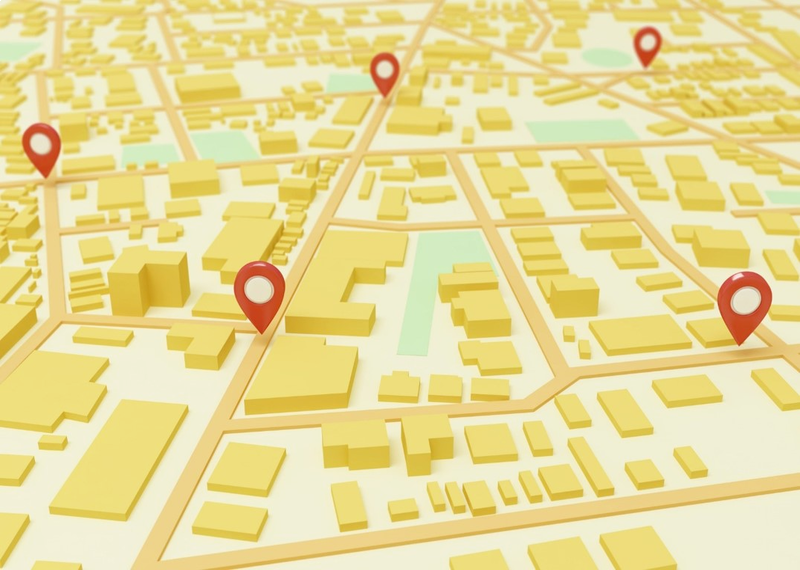How to use geolocation data in customer loyalty strategies?

Today's retail destinations face more competition than ever before, challenging them to attract and retain shoppers cost-effectively. Customer expectations are also rising, driven by new digital technologies designed to enhance the shopping experience.
Today's retail destinations face more competition than ever before, challenging them to attract and retain shoppers cost-effectively. Customer expectations are also rising, driven by new digital technologies designed to enhance the shopping experience.
To stand out from competing brands - all looking for the same success - we need to think and act differently as marketers. Those who are successful are able to collect and use data from multiple sources/entry points to fully understand their customers.
High-performing marketing teams that send personalized communications and promotions/rewards achieve higher rates of customer loyalty. However, this is not enough to be successful with customers, especially when most organisations respond to customers after they have made a purchase from the store. Rather than waiting for customers to walk into their headquarters or store, smart marketers drive them beyond the confines of physical retail.
Geo-location has a number of different features that enable organisations to improve their loyalty programme strategy and build stronger customer relationships by delivering a personalised experience based on the time and place of the visit. Data from geolocation also provides crucial insights into customer behaviour, including the stores visited, frequency of visit, length of stay and more.
The future of customer loyalty is mobile
With smartphone penetration accounting for more than 75% of the US population, and the device occupying more than 80% of consumers' waking hours, this represents a huge opportunity for brands to redefine the customer experience. Consumers welcome the convenience and are increasingly adopting mobile apps as their default point of contact.
A mobile app-based loyalty program provides customers with a unique and memorable experience and real-time satisfaction. Location-based technologies such as geofencing can be used to provide personalised mobile communications. For example, a customer who is near a shopping mall or store can receive a push notification offering a special discount on summer clothing based on the customer's shopping history.
Rather than bombarding thousands of customers with generic emails who are not in a position to respond to a marketing campaign in a timely manner, a location-based message can be narrowly tailored to only those users who are in the vicinity of a store.
However, it is important not to rely too heavily on a single channel. Customers have different preferences for how organisations communicate with them and offer rewards. This is where omnichannel comes in. Email, text messaging, social media, mobile apps and digital wallets are all ways to engage customers with your loyalty programme.
Putting your loyalty program on someone's phone changes the way they interact with you. Not only does this provide a value-added way to remind customers of your brand, it can also have a big impact on consumer behaviour. In one study, 62% of consumers said that loyalty programmes available through their mobile phone made them visit the store and shop more often.
Four use cases for geolocation
Mobile phones are shaking up traditional loyalty programmes, as mobile phones are fast becoming the preferred method of loyalty communication between brands and customers, including as a replacement for loyalty cards. Still not sure how to use geolocation? Here are four different ways:
- Real-time location-based targeting: targeting shoppers who are in or near your retail destination with content that enhances their shopping experience.
- Personalised communications based on interests: use geolocation to augment your customers' shopping history data to target shoppers who are interested in the performing arts, sports or the beach.
- Send conditional messages to out-of-town customers: If some of your customers are from out of town or even out of the country, you may want to change the messages in your upcoming mailings to include upcoming events.
- Measure the effectiveness of your marketing investments: Even if customers don't use your loyalty program barcode during a transaction, you can determine whether your marketing efforts have increased mall traffic based on their geographic location.
Practical tips to get you started
It is important to note that many phones do not automatically share the customer's location, so you should encourage people to turn on location tracking in the app. Here are some incentives you may want to consider:
- Providing useful content in the app based on things to do based on the customer's location, or sending personalised communications via email, which is a tried and tested channel.
- Make sure your customers know why they are sharing their location and be very clear about the benefits to them, such as enhancing the shopping experience.
- Reward customers with loyalty points based on their behaviour, including when they visit your shopping centre or when they buy something in-store.
Mobile apps are quickly becoming the most important digital touchpoint in your shoppers' path to purchase, so if you haven't already integrated geolocation into your shopper loyalty program, now is the time, as it will increase customer engagement, satisfaction and sales for you and your tenants.
